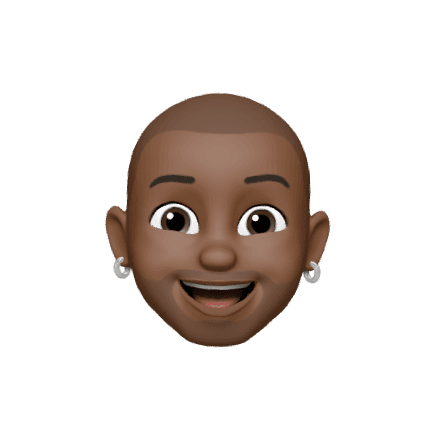
Usability Evaluation Of NIFS Mobile Application
NIFS, situated on the IUPUI campus, delivers exceptional service to over 3000 members using some of the most advanced equipment in the field. Additionally, they offer fitness evaluations and wellness plans of varying intensity to a diverse population. The NIFS's resources can be accessed online through desktop (web) and mobile apps. These function as a medium for users to schedule fitness classes, utilize customized workout programs, and interact with a range of fitness-related services provided.
What is the Problem?
The NIFS administration has noticed that there is a considerably low user interaction with the mobile app. This leads to the underuse of the app's functionalities and offerings, ultimately failing to captivate and maintain a significant amount of active users.
NIFS sought approaches to enhance user adoption and involvement for their mobile application.
What's provided by the mobile app?
Progress Tracking
Booking Fitness Sessions
Access to personalized Training Programs
Trainer Engagement
Community Interaction
Information and Resources
Objective
In the project, I evaluated the usability of Indiana University's NIFS mobile app. Through this assessment, I provided suggestions to enhance user satisfaction and pinpointed key issues, challenges, and user preferences that were affecting the app's overall performance.
Timeline
7 weeks
Project Info
Usability Analysis
Tools
Figma, Miro
Key usability issues
Too many sub-menus with redundant menu options
Navigation and Categorization Challenges
Confusing and Pre-defined filters for class registration
We set out to learn more about how people use the NIFS mobile app. Our main goal was to figure out how users interact with it and understand why some might not be using it much, or at all. To get to the bottom of this, we decided to do two things: 1) observe users use the app and read what they say about it on social media forums, and 2) conduct quick, semi-structured interviews with NIFS users.
With this feedback in hand, we looked deeper into what users expected from the app and why some features weren't meeting those expectations. Based on everything we learned, we pinpointed areas where the app could be better. Our final step was to offer clear suggestions for improvement, ensuring that these were practical and based on real user needs and feedback.
Observations
Because we didn’t have a lot of time, we decided that the best way to start understanding the problem was by watching users interact with the app and checking out their comments on social media forums
After watching users and reading their social media comments, it became clear that there were a few shared difficulties when using the NIFS mobile app. Many users primarily used the app to sign up for group fitness classes but didn’t fully understand or even know about some of its features. The information seemed spread out and a bit confusing

While the observations and social media explorations provided valuable insights into the user difficulties, it sparked a pivotal question
What specific barriers were preventing users from discovering and utilizing these unknown or misunderstood features to their full extent?
User Interviews
With that question in mind, We realized that to delve deeper into the users' experiences and to comprehend the roots of the issues observed, initiating direct conversations through interviews became imperative.we crafted several questions aimed at understanding their familiarity and struggles with the app's features .
"I wish things were grouped more logically. It takes ages to find what I'm looking for"
"When I tried to register for a class, the filters made no sense to me. Why can't I customize them to my needs?"
"Navigating through the app is like going through a maze. Why do we have so many similar options in different places?"

User 9
20 + visits per month

User 2
10 + visits per month

user 7
15 + vistis per month
The findings from these interviews, rich with both qualitative and quantitative data, enabled us to categorize and pinpoint the specific challenges users were encountering
Thematic analysis
We reviewed recordings of the interview sessions carefully and laid out the problems and complaints that each users had. We then used thematic analysis to organize and group these pain-points into categories.
App Navigation
Limitation in booking amenities
Class registration
Inconsistent information
From the interviews, we pinpointed key sections of the app causing issues, making it less user-friendly. These insights helped us spot specific areas that need re-evaluation to make the overall user experience smoother and more intuitive
Identified Sections
App navigation
Users frequently found themselves stuck in navigation loops and experienced redundancy in menu options.
Seamless app navigation is crucial for providing users a frustration-free experience and ensuring they can accomplish their tasks effectively. Issues identified during interviews, such as users getting stuck in navigation loops and expressing frustration, underscore the necessity to scrutinize this section.
Navigation Loop Issues: Investigating repetitive and perplexing navigation paths that cause users to abandon tasks.
Menu Usability: Evaluating the clarity, accessibility, and user-friendliness of menu items and navigation bars.
User Journey: Exploring how users navigate through the app from startup to accomplish various tasks.
User onboarding and feature discovery
A lack of awareness and understanding of the app’s features among users, resulting in underutilization.
Ensuring users can comfortably transition into using the app and easily discover its features is paramount for user retention and optimal app utilization. Initial findings highlighted that users were unaware of certain features, indicating potential gaps in the onboarding process and feature discovery mechanisms.
Initial Setup : Understanding user experiences during the first interactions and throughout the setup process.
Feature Awareness: Evaluating how and when users are informed about the various features available within the app.
Learning Curve: Examining the intuitiveness and ease with which users can understand and start utilizing the app's features.
Class registration
Challenges navigating and using pre-defined filters during class registration.
Given that a significant portion of users utilizes the app for class registration, any barrier or difficulty encountered during this process can critically impair their experience and satisfaction. The struggles users experienced with pre-defined filters, as identified in earlier phases, necessitate a deep dive into this section.
Search and Filter Usability: Investigating the efficiency, clarity, and user-friendliness of search and filter options available during class registration.
Registration Flow: Examining the steps involved from selecting a class to successfully registering for it.
Information Availability: Evaluating the adequacy and accessibility of information related to classes, schedules, and registration processes.
Think aloud
Having pinpointed key sections of the app for closer examination, the think aloud with 10plus users has helped us gain invaluable insights into specific challenges and pain points. As they interact and verbalize their experiences in real-time, enabling us to address and refine the crucial aspects of the user experience effectively.
User persona representing the typical user involved in the Think-Aloud sessions
Task Selection for Evaluation:
After analyzing the insights from the observations and interviews, we decided to evaluate the tasks that cover essential features and align with the user’s current priorities. These tasks were:
Emotional map
Emotional map allowed us to tap into the user's emotional journey during their interaction with the app. This visualization made it evident where users encountered heightened negative emotions such as anger, frustration, or confusion, highlighted by points like T1, T2, and T3. By linking these emotional peaks to specific tasks or app functionalities, we could identify moments in the user experience that were most disruptive or unsatisfactory.
HIGH
LOW
POSITIVE
NEGATIVE
T2
T1
T3
This graph showcases the results of our "Think Aloud" testing, depicting participants' experiences across three key tasks. This graph offered tangible evidence of the extent and frequency of usability challenges experienced by users across different tasks.

Usability Issues
Too many sub-menus with redundant menu options

87% of the participants expressed confusion and frustration because of the overwhelming amount of reduntant options


Navigation and Categorization Challenges
12 out of 15 participants needed to return to the main menu due to confusing menu categories causing navigation loops

Confusing and Pre-defined filters for class registration






6 out of 15 participants knew to click on filters tab
6 out of 15 participants attempted to click on the available options but encountered an error

3 out of 15 participants knew to click on change filters CTA







